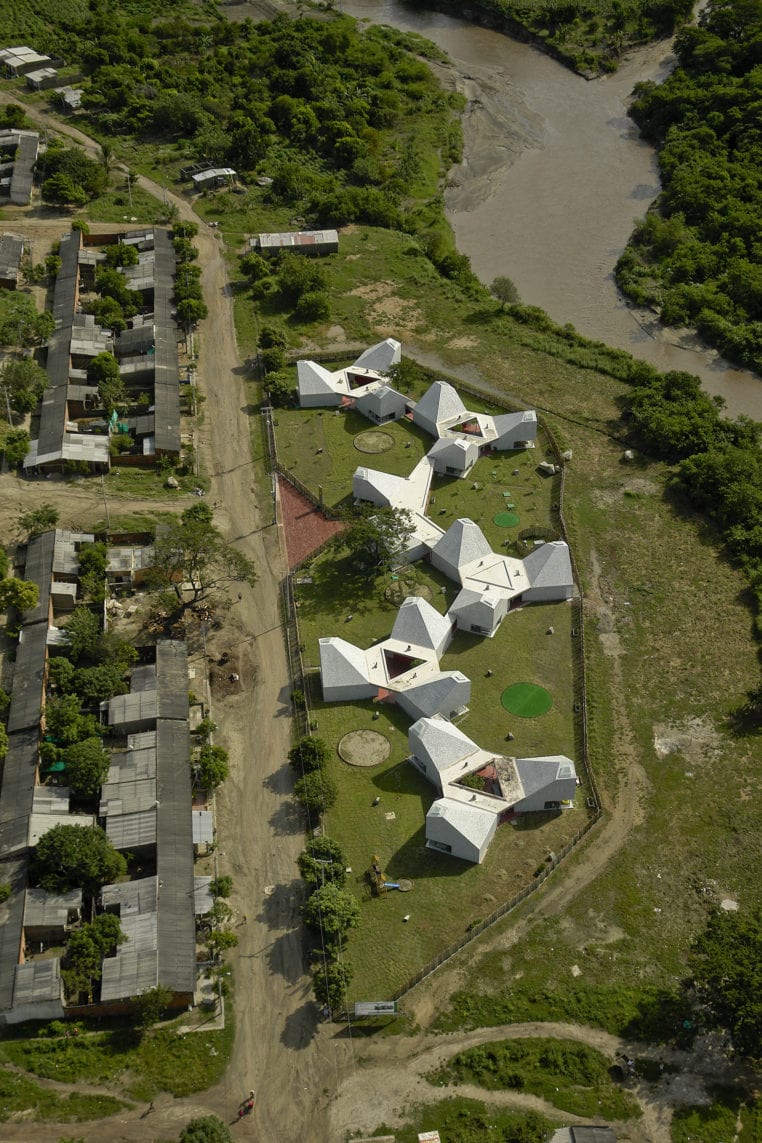The Timuyai and La Paz kindergartens are part of the policies of the Santa Marta mayor’s office and the Carulla Foundation to improve the educational and nutritional conditions of communities displaced from the countryside by violence and settled on the outskirts of the city. Its aim is to develop infrastructures to improve early childhood conditions in low-income neighbourhoods for the most vulnerable population between 0 and 5 years of age, in areas characterized by violence and the absence of public infrastructure. The challenge presented by a context such as Colombia’s is to develop projects that are capable of generating social inclusion and that are capable of activating new forms of use, appropriation and pride on the part of the communities.
The building is conceived as a visible, open and adaptive structure; composed of a system of flowering modules capable of adapting to the most diverse situations, whether topographical, urban or programmatic; generating buildings willing to grow, change and adapt according to particular or temporary circumstances, proposing a strategy that admits changes, accidents and interchanges, thought more as a method than as a permanent form. This is an emblematic building, representative and symbol of the neighborhood, which by its very form differs from the context without urban planning that surrounds it and thus becomes an agglutinator and a prominent element in the community.
The project aims at sustainability from several fronts in order to improve the urban context of the population, generating awareness and thinking about the current and future generation, thus trying to produce a social and ethical change that encompasses a development model for the surrounding population. The strategies involved in meeting the objective include the reduction of energy consumption through the system of façade walls of high thermal efficiency supported by natural ventilation, optimization in the use of water with recycling and reuse of rainwater and the implementation of agriculture and productivity as a complementary thematic axis in the development of educational activities, among others.

